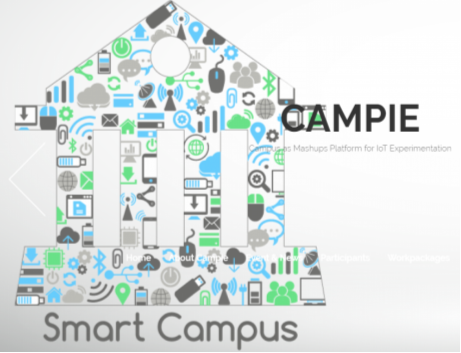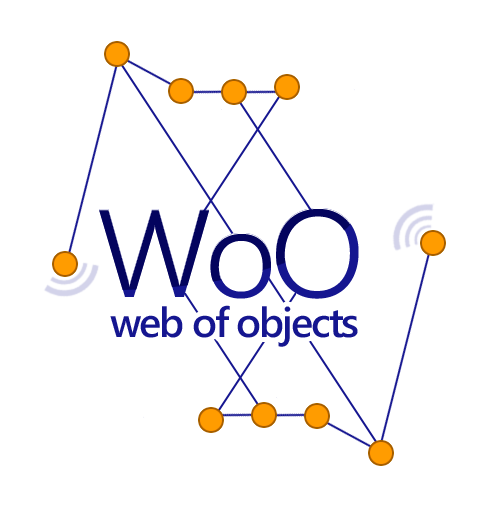Funded Research Projects and Grants

Campie: Campus as Mashups Platform for IoT Experimentation
Funding Agency: Egyptian National Telecommunications Regulatory Authority
Start-End Dates: December 2016-June 2019
Role: Co-Principal Investigator
Web Site: campie.cu.edu.eg
Summary: Campie proposes a framework for deploying IoT in a large university campus (such as Cairo University in which the use cases are deployed). The focus of CAMPIE is to:
- develop the CAMPIE platform and enable seamless integration of various hardware components and data feeds (e.g. readings from mobile-phone sensors, IP cameras, presence sensors, and Wi-Fi access points)
- develop a protocol for service discovery independent of the underlying application layer, network layer, or physical layer
- a service composition mashup for application development accessible to novice, non-technical users, who want to develop simple innovative services suitable for their use case without having to know about programming languages
- develop an API for researchers and experienced developers to assemble and synthesize useful services and applications
- develop and implement real-life use cases for CAMPIE in a university campus using the two platform interfaces

4G++: Advanced Capacity Boosting Techniques in 4th Generation Wireless Systems
Funding Agency: Egyptian National Telecommunications Regulatory Authority
Start-End Dates: March 2011-October 2013
Role: Principal Investigator
Web Site: www.4gpp-project.net
Summary: The project tackles three inter-related research areas in 4th Generations Wireless Systems : 1) channel-aware radio resource management/scheduling particularly for the LTE uplink. This area also includes coordinated multipoint transmission/reception (comp) and Carrier Aggregation (CA) RRM, 2) inter-cell interference coordination including autonomous power control, interference alignment, and autonomous radio resource management in femto-cells, and 3) exploitation of relays and network coding for capacity and coverage enhancement. The chosen focus areas are essential for the successful realization of 4G wireless systems in terms of the expected high capacity spectral efficiency in the vicinity of 10 bits/sec/Hz. The explored autonomous and self-organizing network (SON) concepts are also important for reduced system operational expenses (OPEX) for operators.
Deliverables
This project resulted in a record number of high quality publications. Project research assistants obtained scholarships in Stanford University, University of Texas Austin, University of California-Irvine, Oulu University and other leading universities.
- New methodologies and schemes for solving many of the significant challenges of LTE and LTE-Advanced systems.
- 35 International Journal and Conference Publications Resulted from the work of the project.
- 6 Master Theses.

WoO: Web of Objects
Funding Agency: Egyptian Information Technology Industry Development Association
Start-End Dates: July 2012-December 2014
Role: Principal Investigator of Egyptian Part of the Consortium
Summary:
The WoO was an ITEA-2 research and development project comprised of a consortium of
WoO envsions the Internet of Things as a world where small intelligent objects share data with each other or cooperate in groups to achieve complex goals. However, current devices and communication infrastructures characterized by proprietary protocols and a lack of common standards both on network and application level prevent the realization of this vision. The general goal of the WoO project is to simplify object and application deployment, maintenance and operation of in-building Internet of Things infrastructures subject to strict constraints regarding resources as computing power, communication bandwidth and energy supply. Hence, acquisition, processing, network computing and intelligent systems are research agenda of the project.
The goals of the project are achieved by working on the following technical goals:
- a general system reference architecture based on consolidated application requirements;
- an uniform resource-efficient network infrastructure based on IPv6 and 6LoWPAN;
- an open homogeneous distributed service infrastructure;
- a semantic and adaptive service composition layer;
- demonstrators validating the Web of Objects concepts.
Deliverables
- Platform for development of standards based IoT applications.
- Enhanced protocols for neighbor discovery, routing, and duty cycling for IoT nodes.
- 9 International journal and conference publications resulted from the work of the project.
- 4 Master Theses.

European Commission TEMPUS Individual Mobility Grants
Three IMGs for funding attendance of the following conferences: IFIP Networking 2004 (Athens, Greece), IST Mobile Summit 2005 (Dresden, German), and IEEE ISCC 2006 (Cagliari, Italy).

Analog Devices INC
Multiple Grants
- Grant of US$ 15,000 for constructing an Embedded Computing and Signal Processing Lab. June 2005.
- Grant worth US$ 3,500 of DSP equipment and software. September 2004.
- Grant worth US$ 5,300 of DSP equipment and software. June 2002.

Interactive Education of Computer Networks
Funding Agency: UNESCO Cairo Office
Start-End Dates: 11/1998 through 4/2000
Role: Co-investigator
Summary: Todo

Versatile Modeling of ATM Networks
Funding Agency: North Carolina Supercomputer Center
Start-End Dates: 11/1993 through 10/94
Role: Co-investigator with Professor H. G. Perros, NCSU, USA
Summary: Todo